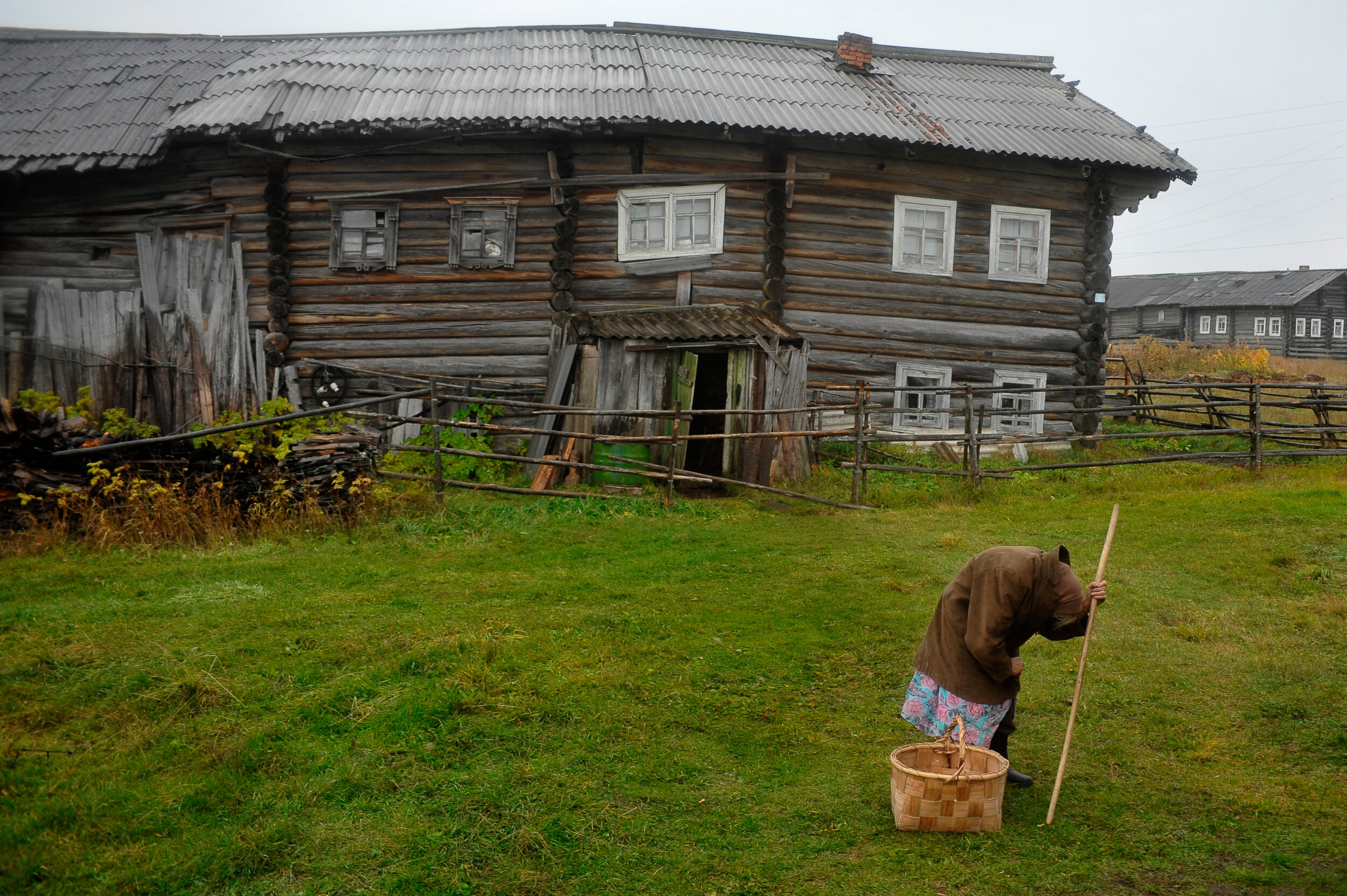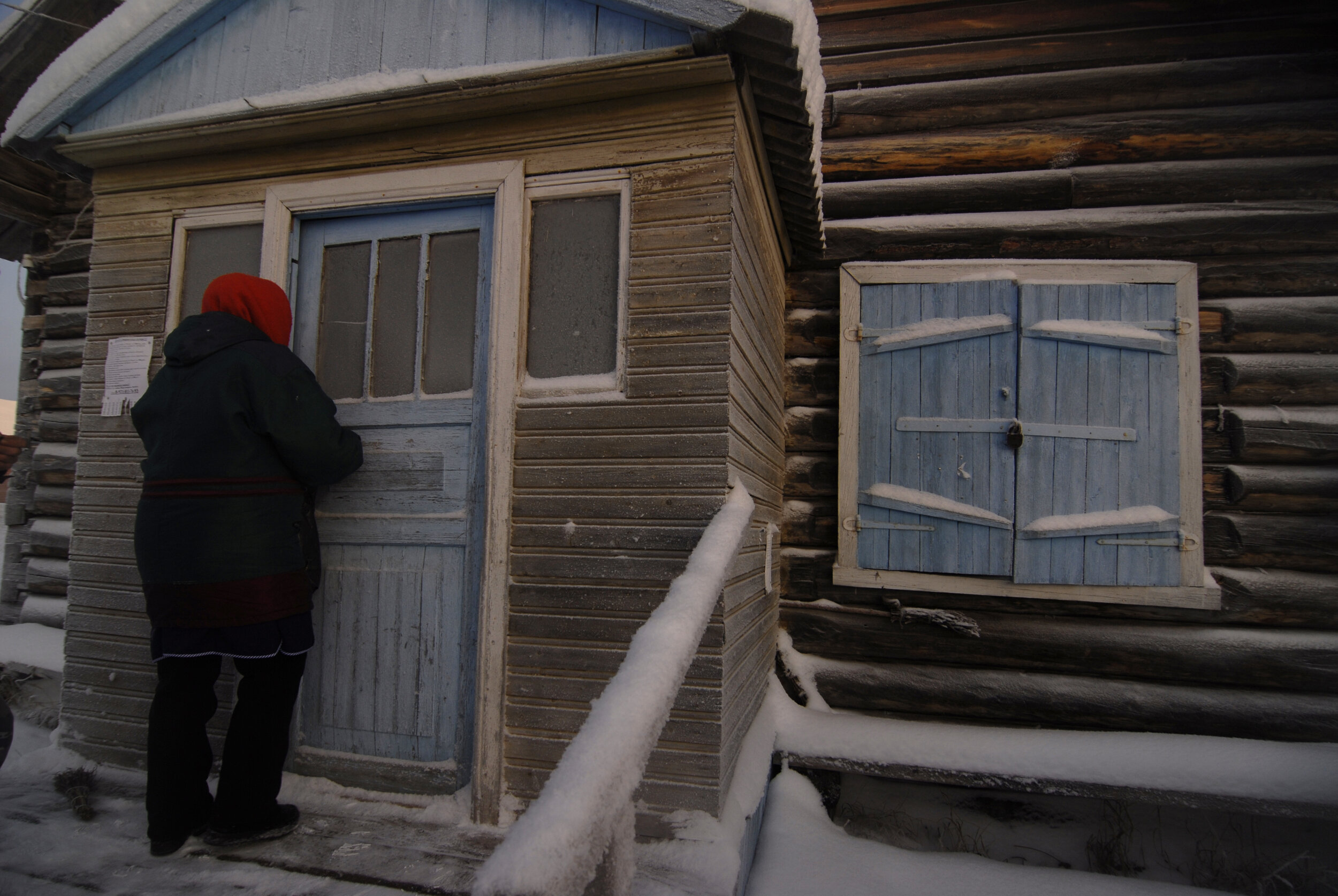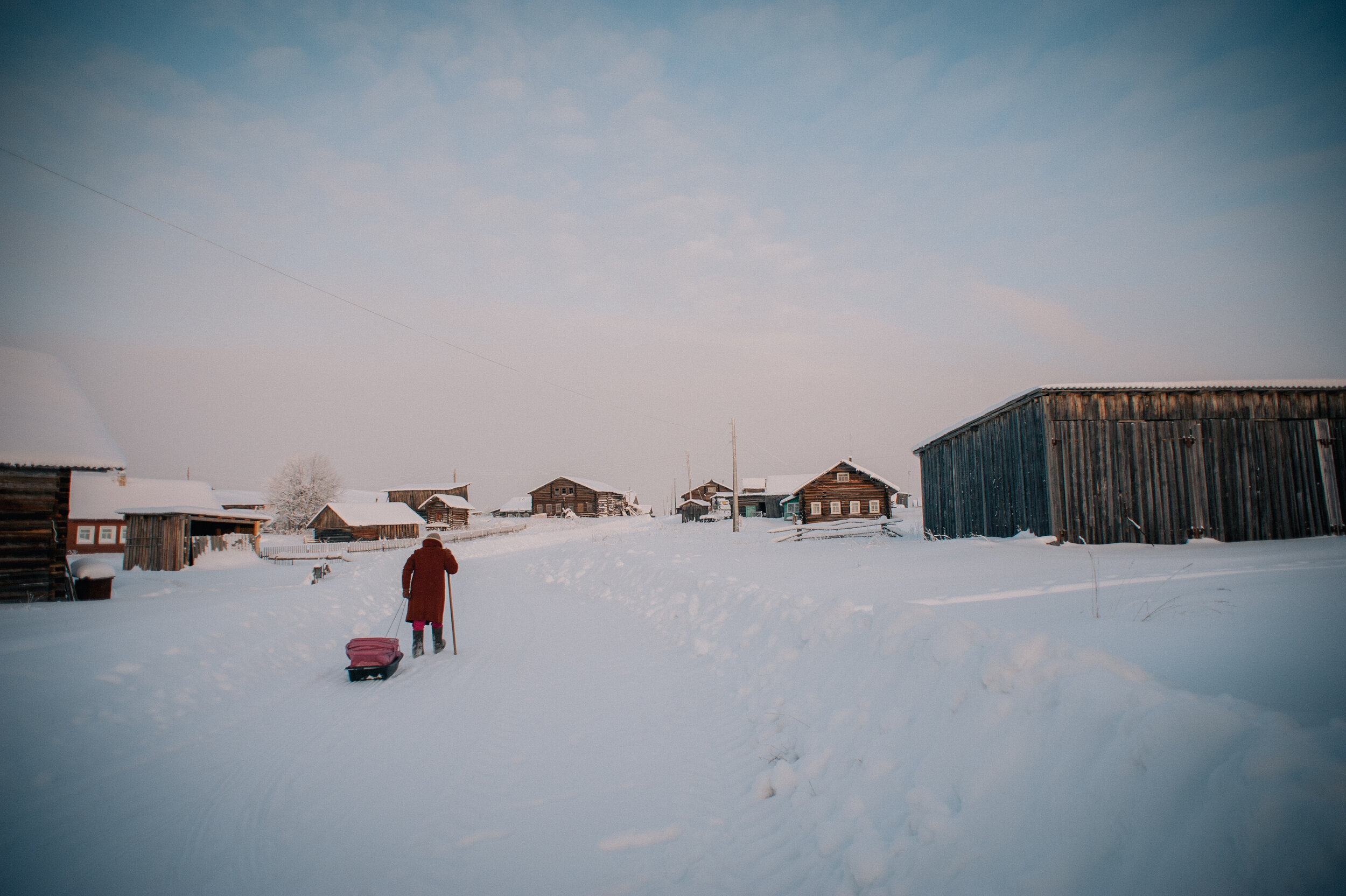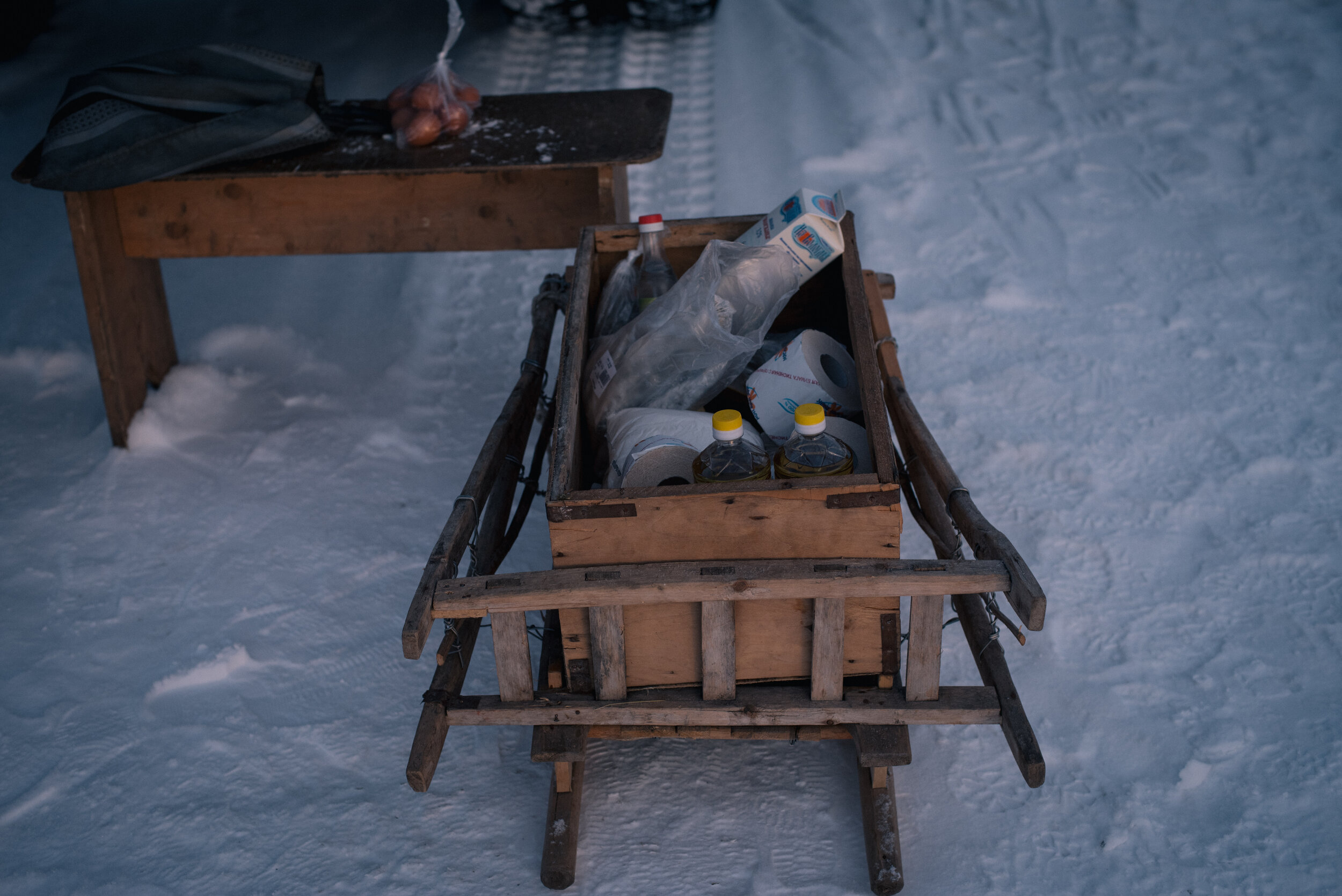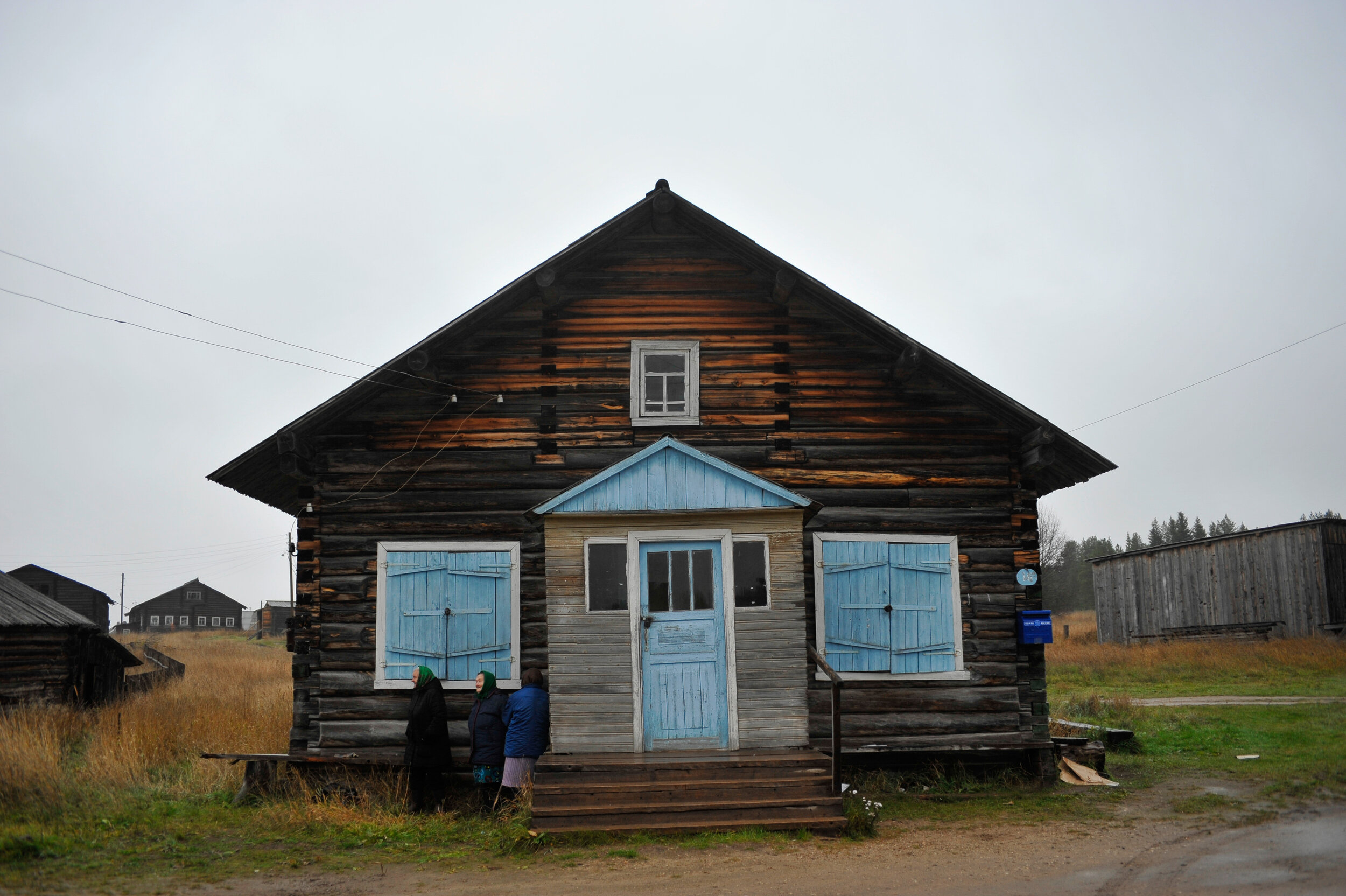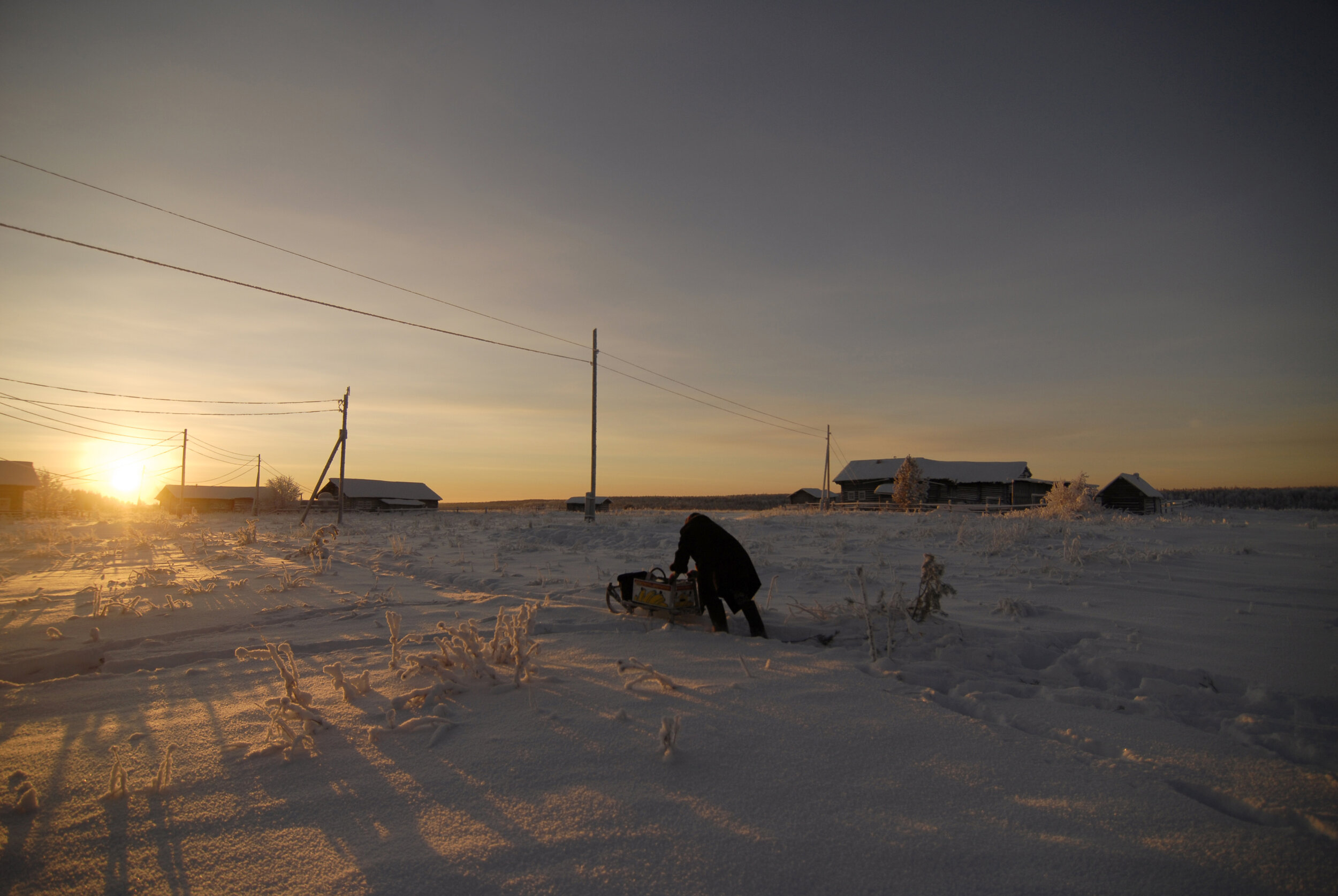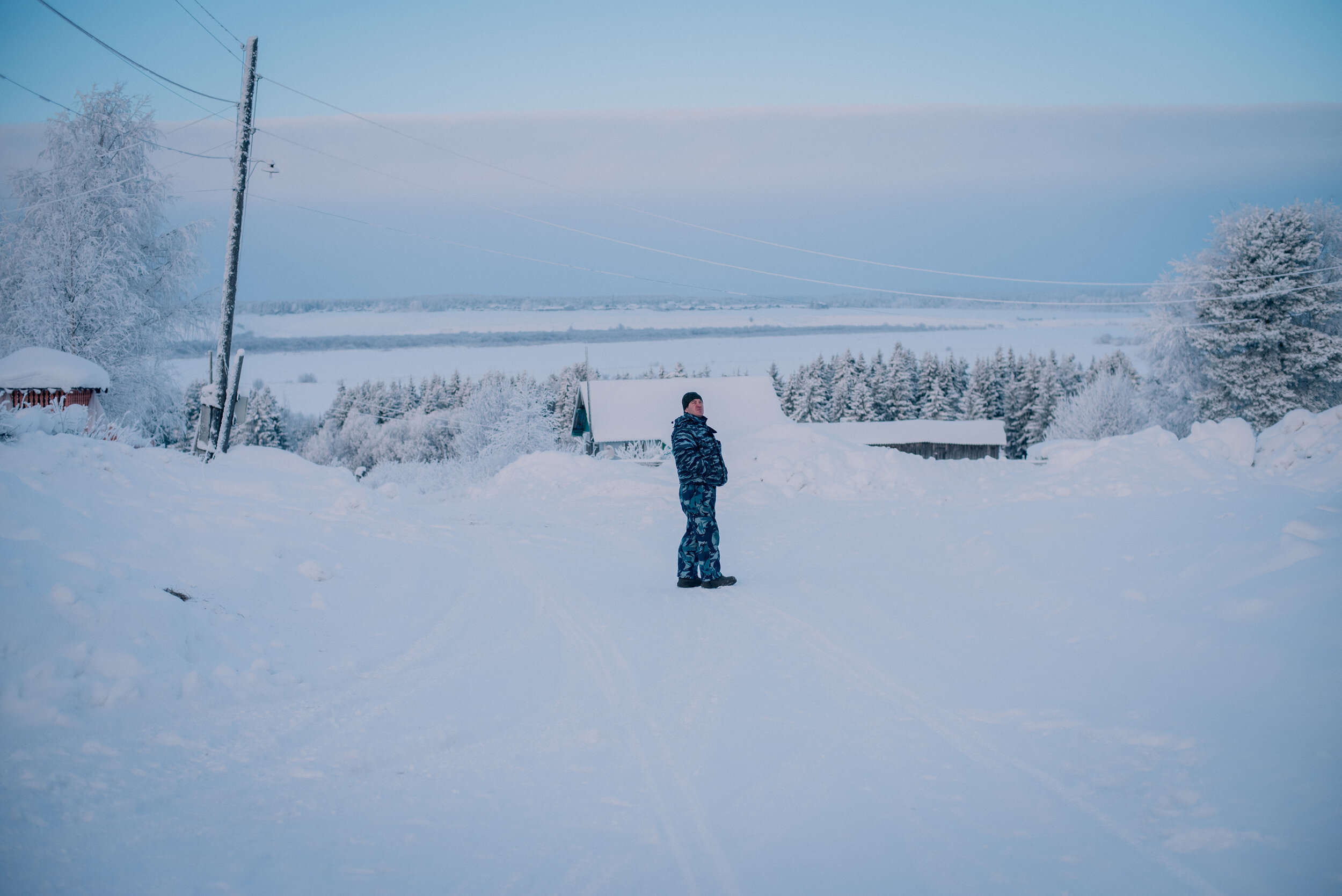
Photography Journal
Zabereg photo project: Accomplishment
A long-term project about disappearing villages along Pinega river in Russia resulted in a photo book and an exhibition
It took me 11 years to accomplish my personal documentary project about Northern Russian villages. My goal was to go beyond documenting the region at a certain moment in history: I wanted to show how the situation evolves with time. I returned to the same villages over and over again, year after year. At some point, I felt how from a total stranger there I turn into someone whose next visit is expected. The region has changed a lot since 2008 when I began shooting there. Many villages got empty, the remaining infrastructure fell apart, schools, daycare centers, shops, and clubs shut down, public transportation became unavailable. At the same time, I met young new settlers who came from the large cities willing to fulfill their lives far away from civilization with a hard farmer’s labor, and maybe to set a new trend opposing global urbanization.
There was a handful of main characters in this project: a group of elderly women all living in one village. By the time I went on my last trip in 2019, only two of them remained - Maria and Rimma. I stayed at Rimma’s and visited Maria who already couldn’t live on her own and moved to her daughter’s. Right after I came back from that trip, I was told that Rimma has left the village. Shortly afterward terrible news followed: Maria passed away. That was a sign to me that my project is over. It couldn’t go on without these two women.
I sat down to put together a book and an exhibition. With help of my incredible friends I was able to craft a stunning book and on the day of my 40th birthday I opened the exhibition at the Museum of Natural History, Jerusalem.
Here are the names of those who made it possible:
Ola Netta Levitsky - book design, illustrations
Eugenia Shraga - book editing, illustrations
Sasha Iudashkin - book cover
Eugenia Kirshtein - exhibition design
I dedicated a separate page to this project on my website, for more information click here: ZABEREG project
Biscuits, bread and water of the forgotten villages
How centuries-long history of the Northern Russian villages in Pinega region was coming to an end right before my eyes.
An excerpt from a long-term personal documentary project.
Russia, Arkhangelsk region, Pinega district. Summer of 2008. Pastoral landscapes, endless ancient northern songs, tender and unusual dialect, holidays and fun. That's what my first, spontaneous trip to the northern villages was about.
Something else, impending like a dark cloud on a cloudless sky, forced me to take a closer look at what was happening. Extinction was crawling towards the villages.
I returned the next winter. I saw abandoned houses, entire villages that had lost their inhabitants. People fled the villages lacking jobs and any future to the cities. Centuries long history of the Pinega villages was coming to an end right before my eyes.
Biscuits
“Will you have dinner?” Rimma Petrovna asks, running past me to the kitchen. It's about 11 o'clock in the morning. Half an hour ago the dawn broke. In the silence of a winter morning, her bare steps on the wooden floorboards echo loudly.I wouldn't dare call her an “old woman” or mark her age in any other way. In her youth, this girl used to fly around, and she continues to fly around as much as her health allows her..
Pinega women, especially the elderly, call each other "girls". They never had the chance to get old. They buried their husbands long ago, they need to chop firewood, carry water buckets, heat furnaces, clear snowdrifts, go to the forest, all on their own.
I have no idea when Rimma Petrovna had the time to cook, but from the Russian stove a cast-iron pan with solonina (fried potatoes with pickled mushrooms) shows up, the table is filled with musyonka (flour porridge), jams, pickles, steamed turnip, moistened radish, wilted tea prepared in a French press (“we collected it in the summer with my daughter and lined the entire floor in the house with tea while it was drying” comments Rimma), and then comes the king of the table, a rare product — "Jubilee" biscuits brought by someone from a city. This biscuit box is almost the only item on the table bought for money, all the rest is grown, collected, salted, preserved by Rimma herself. “Take more biscuits, don't hesitate, come on!” — Rimma Petrovna pushes me towards the valuable delicacy.
How in the world has a "Jubilee" biscuit become a luxury product? How has bread become a luxury food? How, after all, in a village located next to Pinega river, has water become a luxury?
2010. Cheshegora village. Grocery store entrance
Bread
I remember this grocery store in Cheshegora. It is now closed for good, but back in 2011 it still opened, one hour a week. Its shelves were dreary, as in USSR of the late eighties. However, the villagers regularly came to this store. After all, they could buy here some bread delivered from across the river!
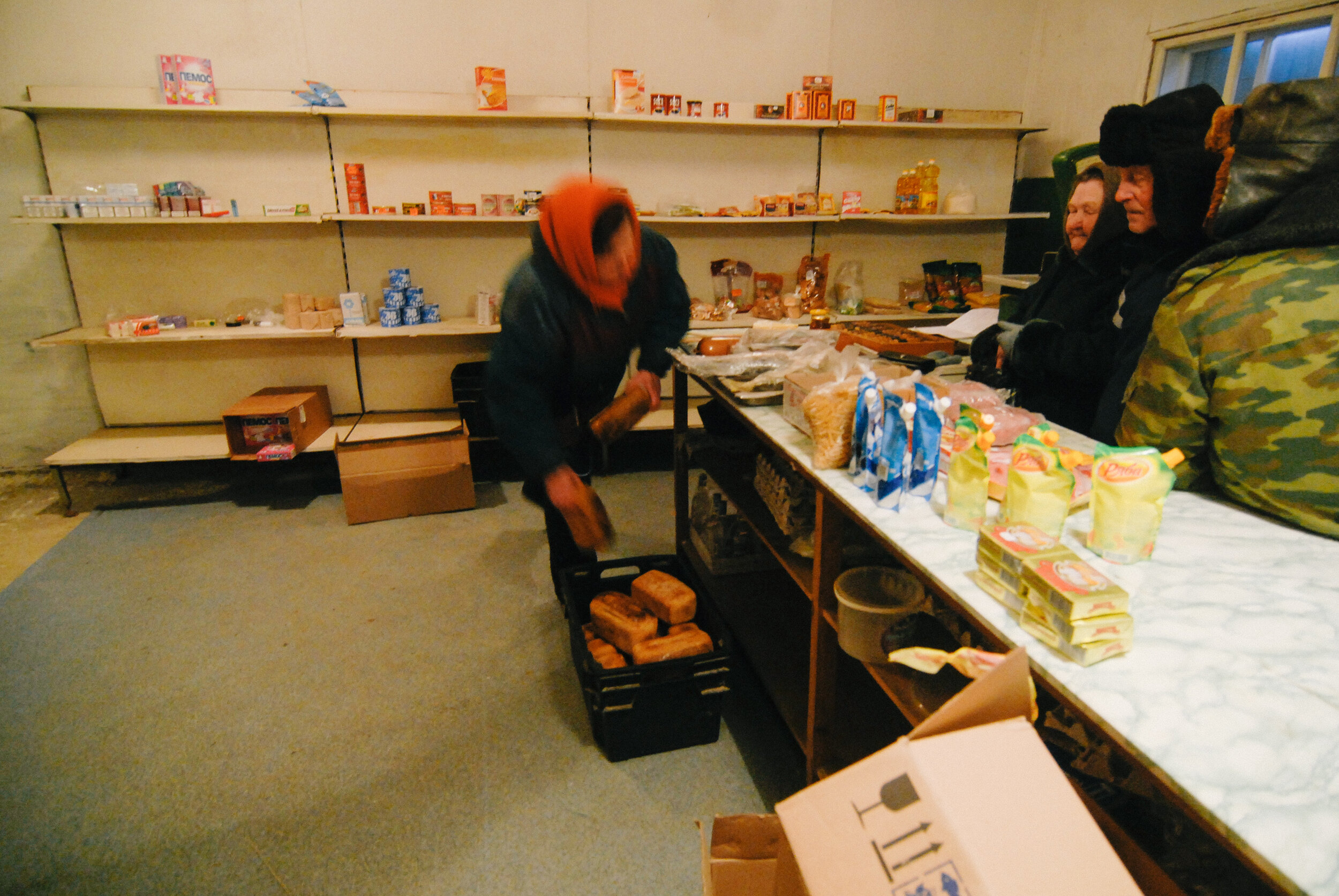
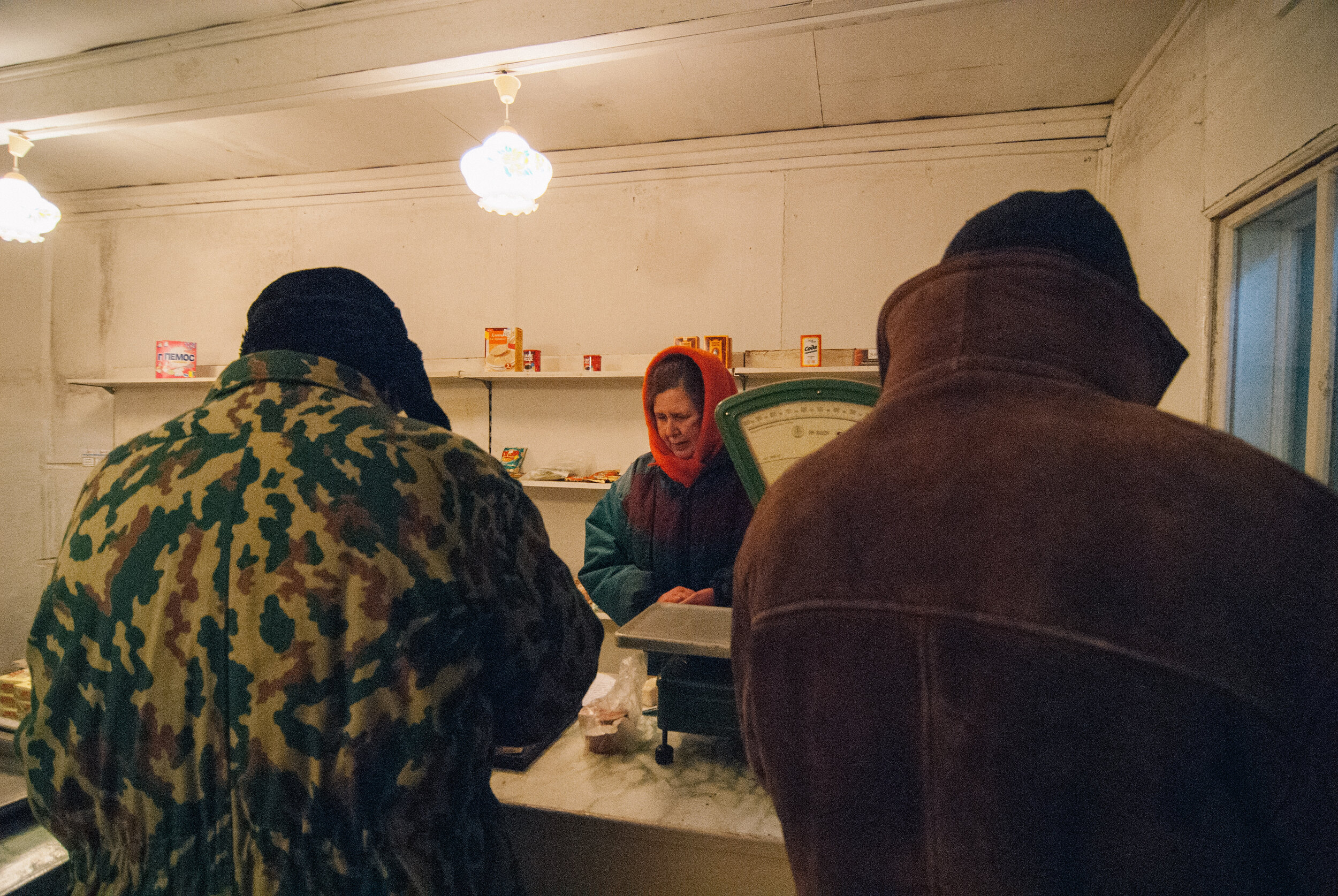
If you didn't show up on time at the grocery to buy food, all you can do is wait for a mobile shop which should arrive on Wednesday, maybe. Or on Thursday.
Rimma Petrovna gets a call from the district center: “Petrovna, we are heading out to you”. It means that the mobile grocery left the town of Karpogory. Petrovna spreads the important news across the village by calling each of six inhabited houses: “The merchants coming!”
2019. Cheshegora village
An hour later, people flock from all corners of the village. There are about ten of them living in Cheshegora, and all are well over sixty. They walk slowly to the village center, where the grocery used to be, and where the last remaining light pole still illuminates a tiny circle around itself at nights. They walk past abandoned huts, dozens of courtyards covered with untouched snow, a shiny red payphone installed recently by the authorities and never used by anyone. They drag handmade sledges, old cradles from baby carriages — whatever one can use to pack the food and bring it home.
You need to buy more, because the “merchants” come only once a week, and they don't come when it storms. Cookies, bread, butter, frozen fish, wine ("wine" is for vodka here), tea, flour, milk, matches, some kind of sausages. What else. Oh, eggs. Well, that's enough. We will last a week.
2011. Cheshegora village. Waiting for a mobile grocery
2019. Cheshegora village. Waiting for a mobile grocery
2019. Cheshegora village. Mobile grocery
It's January. The frost is harsh, -35 degrees Celsius (-31 Fahrenheit). The saleswoman in the back of the grocery truck is bending over a calculator and a till, counting money with her frozen fingers. People line up and cover their faces with mittens and scarves to escape the cold.
A discussion is going on in the line:
- Petrovna, did you call Mishka? Why didn't he show up yet?
- He's drunk, can't walk really.
- What a fool, he gonna drink until he dies.
So, Mishka's left without food for a week.
2011. In the grocery truck heading to Kusogora village
The route of the mobile grocery is fifty kilometres long. The truck stops in five villages which have no groceries. In the village of Kurga lives one person. In the village of Turiya there is one person as well. Shasta has two. Cheshegora has ten. Kusogora is an exception, there are a couple of dozens of residents, and not all of them are pensioners. With the minoral number of clients, the owner of the Karpogory store earns no profit from the mobile shop project. Even taking into account crazy food prices, this looks more like a charity, and no one knows if the goodwill of merchant Viktor Bogdanov will last long.
2019. Mobile grocery near Kurga village
January, 2019. From Turiya village to the highway, there is a kilometer of forest road covered with snow. The only resident of Turiya shows up on skies. He does not want to be photographed.
December, 2010. Kochmogora village
2011. Kochmogora village
The grocery truck doesn't make a stop in Kochmogora anymore: the village is empty.
2010. Shasta village
In Shasta, right next to the highway hunter Nikolai lives with his wife. The rest of this once large village is empty. Thirty years ago, two hundred families lived in Shasta.
The last stop of the mobile grocery in Kusogora village is the longest one. The village is located on a hill high above Pinega river. The truck driver, Nickolay, a hefty good-natured person, walks away from the truck and stares intently across the river, then turns to me. “There it is, my village, Chakola. I come from there. I can even see my house. Ah, but I'm not visiting Chakola anymore. I just stand here and look from afar. It's a pity…”
Water
2019. Cheshegora village. A well
Something's wrong with the water in Cheshegora village. No one knows exactly what happened, but, according to the locals, “feces got into the water”, and for last several years it is unsuitable for drinking.
2019. Cheshegora village. “Water quality check”
Mikhail doesn't believe in the rumors about water. He checks its quality with a nut on a rope. If the nut makes circles as it moves, it's safe to drink it. If the nut goes across, just don't drink.
2019. Cheshegora village. Mikhail
Mikhail was born and spent his childhood in Cheshegora, then he moved across the river to Pyrinem village, and recently retired and returned to Cheshegora. "It's just easier to live here. At least you can get to the district center". Bus service to any of the villages was closed three years ago, and one can only get to Cheshegora by a private car, but Pyrinem is also across the river. There are no roads on that side, and it's much more difficult to get there.
2019. Cheshegora village. Water reserve for a month at Rimma Petrovna's house
Rimma Petrovna and most of her neighbors don't drink from the well. Once a month her grandchildren bring her water in cans. Some villagers get water from Pinega river, but it's quite a walk. The river is about 2 kilometres away from houses, and the banks are high and steep. Everyone invents their own workaround.
As summer comes, preparations for winter begin. First of all, firewood. A woodpile should contain enough firewood for the next two winters at least, that's a rule. Then come berries, mushrooms and herbs - anything that can be forged in the wilderness. Not much can be harvested in a garden: the climate is harsh. People grow potatoes, cabbages and carrots.
Inventing workarounds, surviving, perceiving extreme conditions as the norm has long become a habit and a necessity here. Each winter is a circumnavigation. One needs to prepare seriously to survive it without a loss. How many winters left until the villages will become silent, until forgotten people will leave their houses for good? Not many, I’m afraid.



